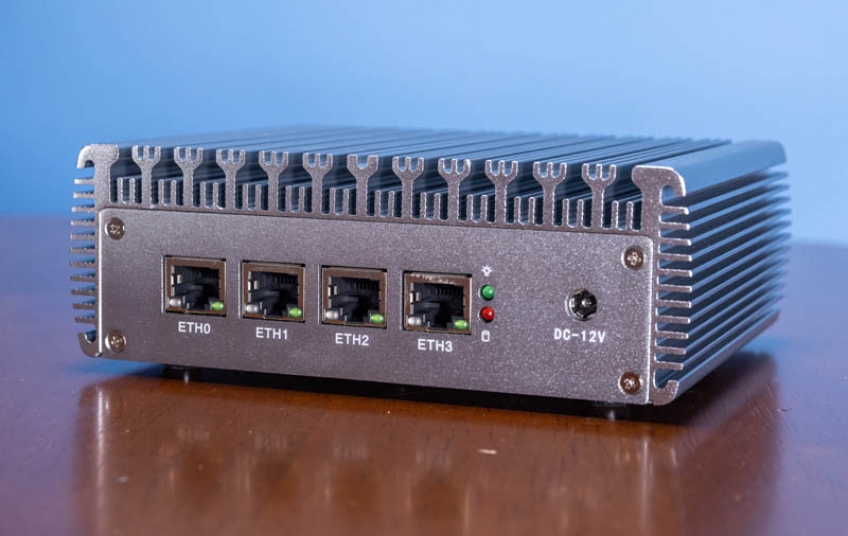This is one that we have had in the queue for some time. We decided that this one does not need its own video. Today we are going to look at the N5095 version of the 4x 2.5GbE firewall line that we reviewed previously on STH. We are going to keep this shorter since we are going to focus more on the changes between this and the other units we have reviewed in this series.
Topton Intel N5095 4x 2.5GbE Firewall Overview
The N5095 units have become hard to find as these go through new revisions constantly. Perhaps that makes sense. From our N6005 review, our ranking guidance is:
-
N5105
-
J4125
-
N6005
-
N5095
And in this review, we are going to see why. The barebones N5095 unit was $219 versus $228 for the N5105. The AliExpress listing we purchased this from has already changed.
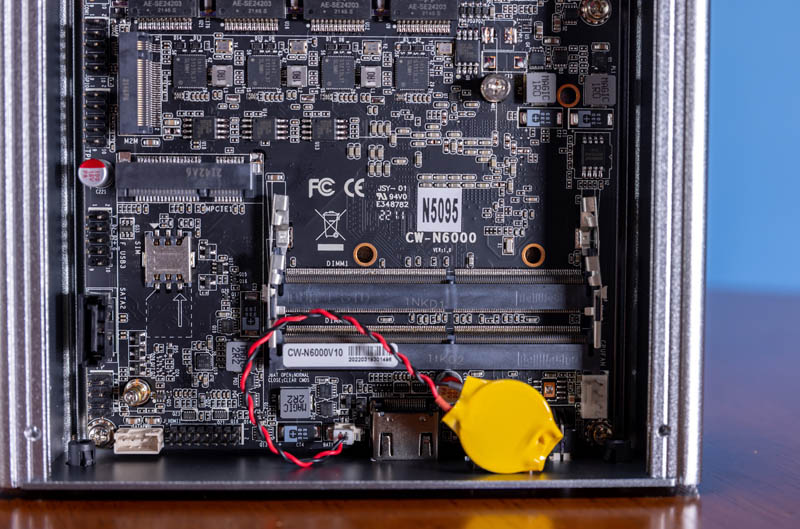
That is not bad for a 4x 2.5GbE machine with a processor installed. At the same time, one still needs to add RAM and a SSD or 2.5″ drive to get a system that is really usable so the cost is more. It is not quite the Netgate 4100 cost, but for a firewall, it also does not have pfSense+ installed.
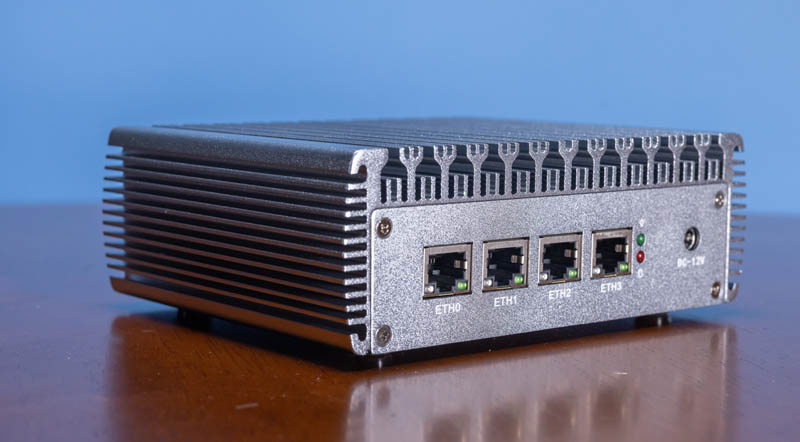
For the quick answer on why this was far from our favorite, the primary reason is just the power consumption and pricing compared to the N5105. From the perspective of looking at new models, we think this would inform our decisions on N5105 v. N5095 more generally.
Topton Intel N5095 4x 2.5GbE Firewall Review
The front of this unit has two USB 3.0 and a HDMI port. There is a power button that lights up and antenna holes. The chassis is mostly metal, but the faceplates were plastic. We will quickly note that with all of these units it has been common to get a different chassis than was pictured in the photos on AliExpress.
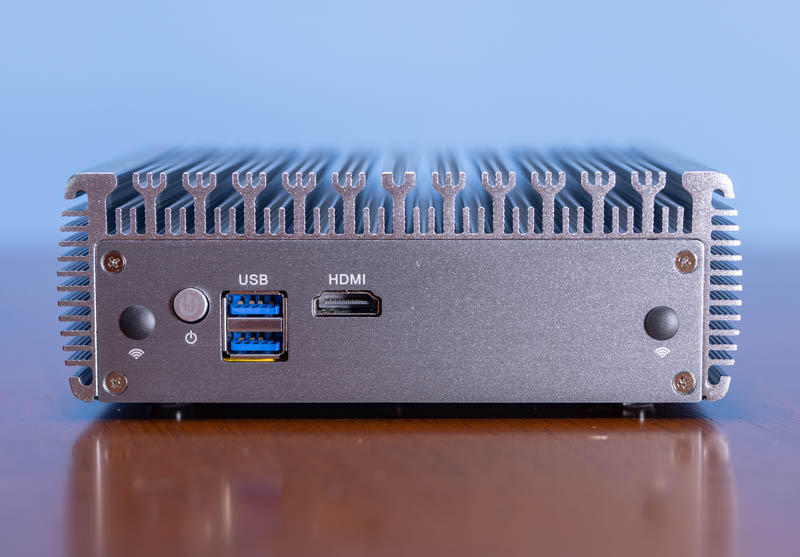
The other side of the unit is perhaps the more important end. It has 4x 2.5GbE ports. These are Intel i225 NICs and are the B3 stepping NICs.
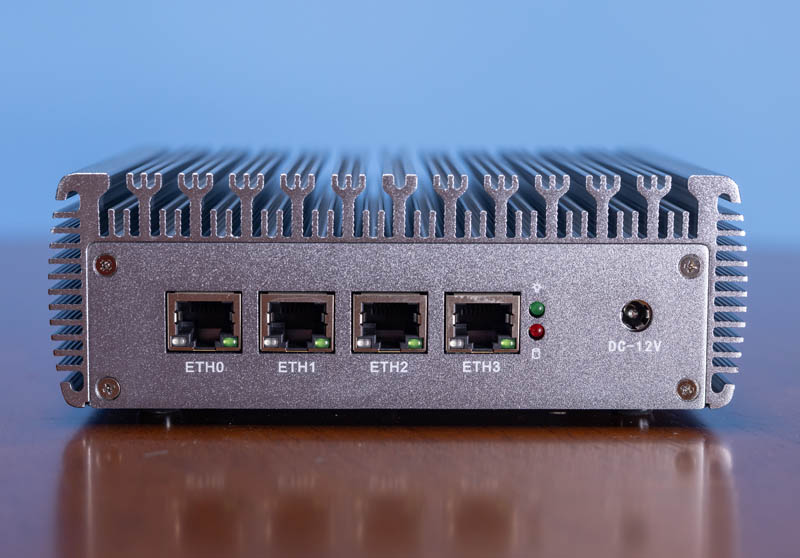
There is also a DC 12V input. We have powered these via the PoE Made in China PoE Splitter we reviewed but the J4125 and N5105 are better options for that route given their lower power consumption.
Here is an internal view of the system. This is the same CW-N6000 motherboard we have seen in the N5105 and N6005 systems, just with the N5095 sticker.
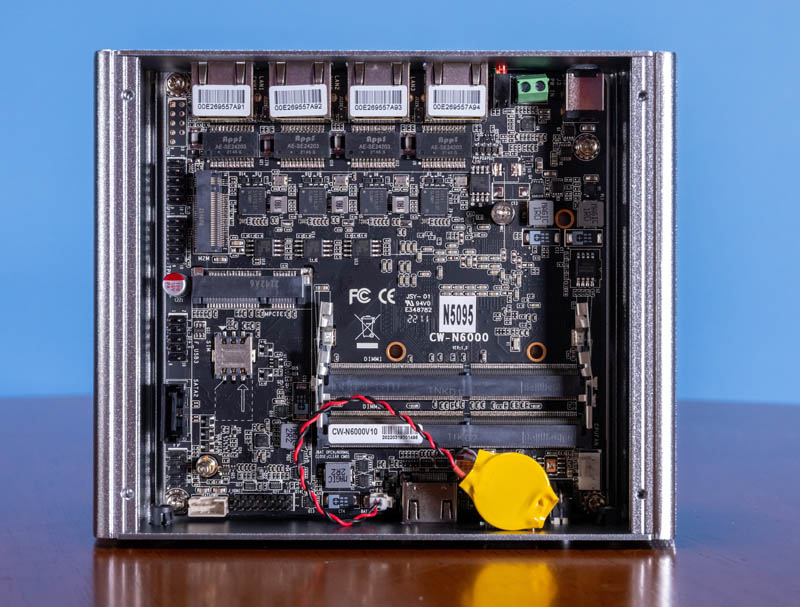
Along the bottom here we get two SODIMM slots. Although we generally suggest using dual channel memory, many of the pre-configured systems come with only one DDR4 SODIMM. The benefit of having a single DIMM is lower power/ heat output.
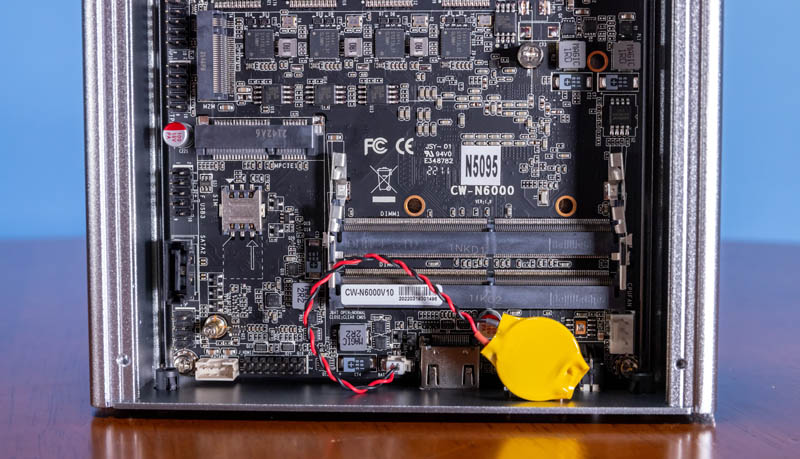
Along the other side, we have a mPCIe slot with a SIM slot. There are apparently 3G/4G modems that can go in here, but we have not heard great things from users who have tried ordering them with the units. Feel free to comment if you have had a better experience.
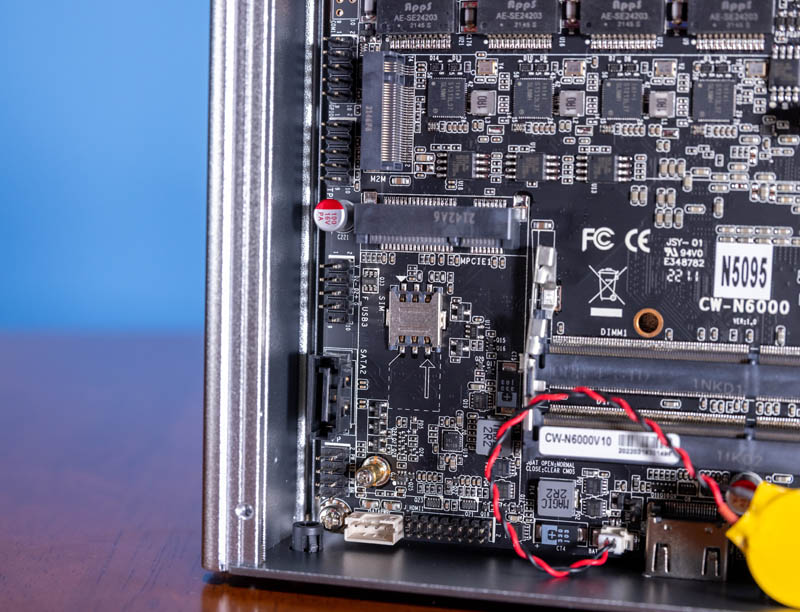
Behind the RJ45 ports, we have the SLNMH Intel i225 NICs. That stepping is the B3 stepping. There is also a M.2 slot for a NVMe SSD. We suggest using a lower power option to keep power and heat generation down in these.
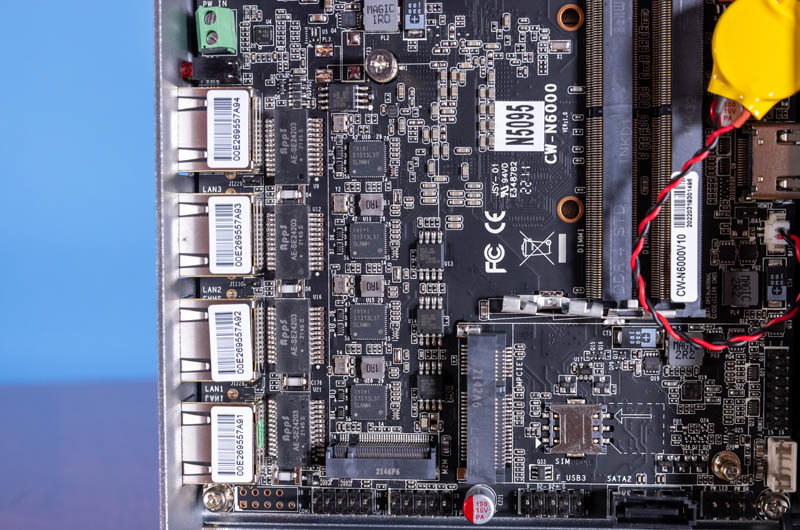
One other small feature is that there is a 4-pin fan header in the corner of the motherboard. Some users have either gotten units with bottoms that have fan holes or have made them via a Dremel or drill and used this. Since this is a fanless system with fairly sparse firmware, expect fan speeds to not be automatically controlled.
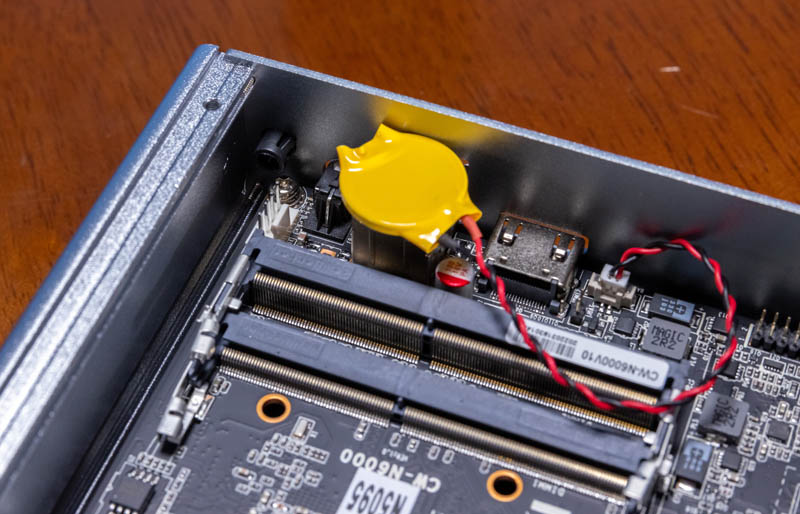
This is very similar to the other hardware we have seen in these units.
Intel Celeron N5095 Performance
We wanted to just quickly look at the relative CPU performance between this unit and a few others on the market. We have reviewed this form factor with the J4125, N5105, and N6005 as well, so we are really looking for the relative performance between those four options.
Python Linux 4.4.2 Kernel Compile Benchmark
This is one of the most requested benchmarks for STH over the past few years. The task was simple, we have a standard configuration file, the Linux 4.4.2 kernel from kernel.org, and make the standard auto-generated configuration utilizing every thread in the system. We are expressing results in terms of compiles per hour to make the results easier to read:
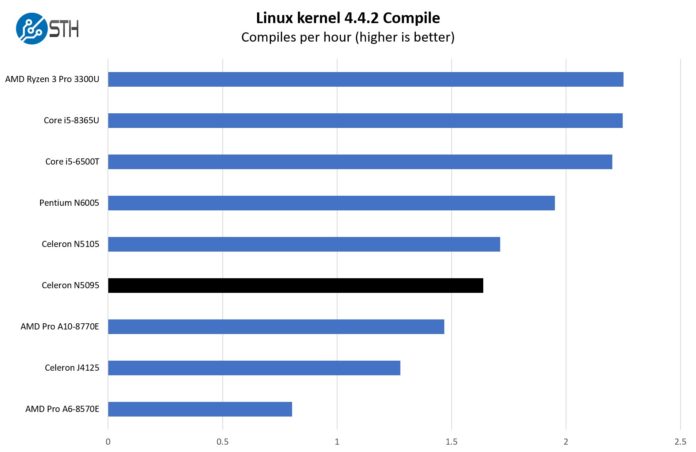
Here we just wanted to show that the performance was near the AMD Pro A10-8707E we found in our Project TinyMiniMicro HP EliteDesk 705 G3 Mini CE Review. This is a much newer and lower power CPU, but that HP review set off our Project TinyMiniMicro series.
7-zip Compression Performance
7-zip is a widely used compression/ decompression program that works cross-platform. We started using the program during our early days with Windows testing. It is now part of Linux-Bench.
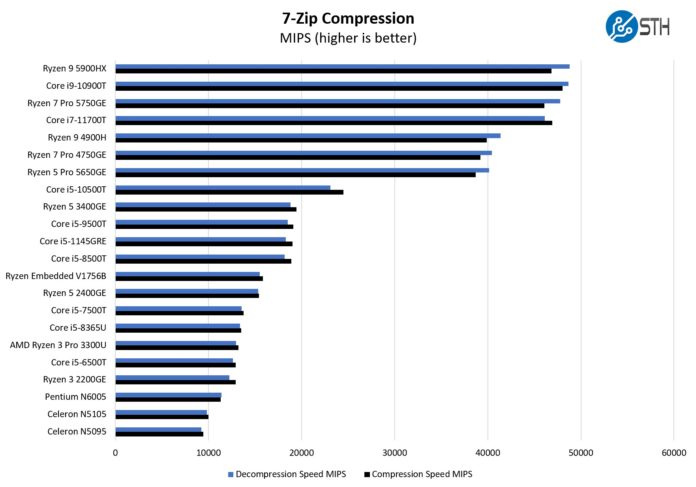
Here we just wanted to show that modern “big core” CPUs fairly easily out-pace this solution. Even going back to the 4C/ 4T Intel Core i5-6500T versus the N5095 4C/ 4T platform, we see the six (soon seven) generation old Core processor was faster than this. When we run Proxmox VE on these nodes, then put pfSense or OPNsense on them, we are really looking at virtualizing lightweight services not doing heavier virtualization. If you want a better virtualization host, the Project TinyMiniMicro platforms are better.
OpenSSL Performance
OpenSSL is widely used to secure communications between servers. This is an important protocol in many server stacks. We first look at our sign tests:
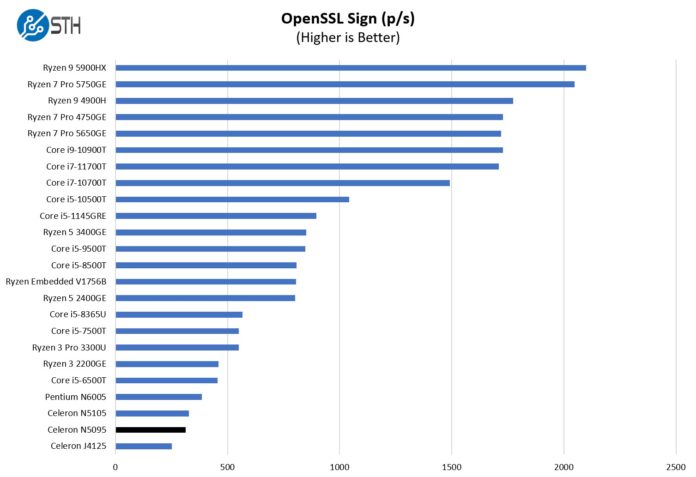
Here are the verify results:
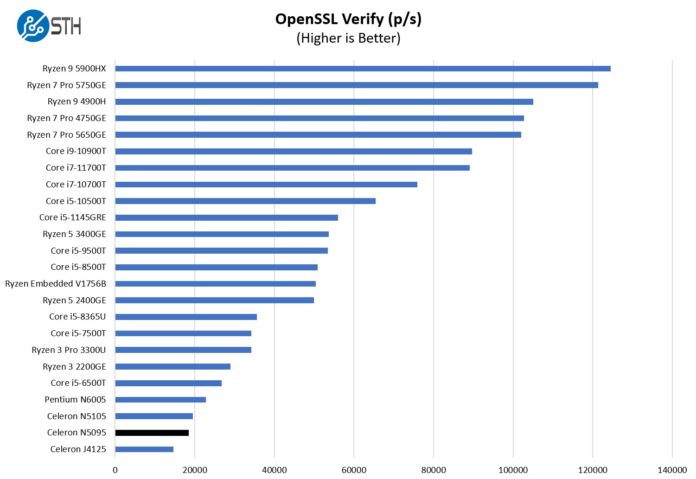
Still, compared to the J4125, these are faster by quite a bit. For a basic firewall/ NAT box, the J4125 is still a good option as it uses less power.
4x 2.5GbE pfSense NAT Testing
Since we got asked, here is a pfSense VM on Proxmox VE using our How to Pass-through PCIe NICs with Proxmox VE on Intel and AMD guide (more on that later in this review) passing traffic over two dedicated NICs using NAT and 10 firewall rules and zero additional tunings.
We again saw line rate 2.5GbE speeds (~2.3-2.4Gbps.) During stress testing, we also raised the ambient temperature to 28-29C and had no issues running multi-day tests. The benefit of the faster processor is being able to add more to IDS and other features on the box with a bit more headroom. Still, for basic cases, even installing pfSense/ OPNsense in a Proxmox VE VM and pushing traffic both from the base OS, but also from the VM’s across all four NICs worked fine.
Next, let us get to power consumption, noise, and our final words.
Power Consumption and Noise
Power consumption on these was interesting. We have received a number of reports that the Jasper Lake power supplies that come with the Topton and KingNovy units are of very poor quality. We have had readers replace the PSUs and save a few watts. At the same time, our other sense is that most of our readers will use the standard power supplies. Admittedly, with the J4125 units that use significantly less power, we have a few now on PoE+ splitters.
At idle, we saw between 11-12W depending on single versus double SODIMM configurations. Maximum power consumption hit just over 27W. This is a few watts more than we saw on our N5105 unit and quite a bit more than we saw on the J4125 units.
These boxes are designed to largely be “always-on” devices. Saving a few watts may be a big or small deal. In some places in Europe, power is $3-7 per watt per year, so saving a few watts adds up quickly, especially on always-on devices.
Key Lessons Learned
So let us take a step back here. This unit worked without issue for us. That is important because there is a fundamental difference between units that just do not work and ones that are rough around the edges and are comparatively weak. If you have one of these N5095 boxes, it would not make much sense to “upgrade” to a N5105 or N6005 box if we are being honest.
Our challenge is more with the price/ performance and power consumption. The difference between the N5105 and N5095 is usually $7-11. We now have many of these machines and the N5105 and N5095 performance is very close as is the power consumption.
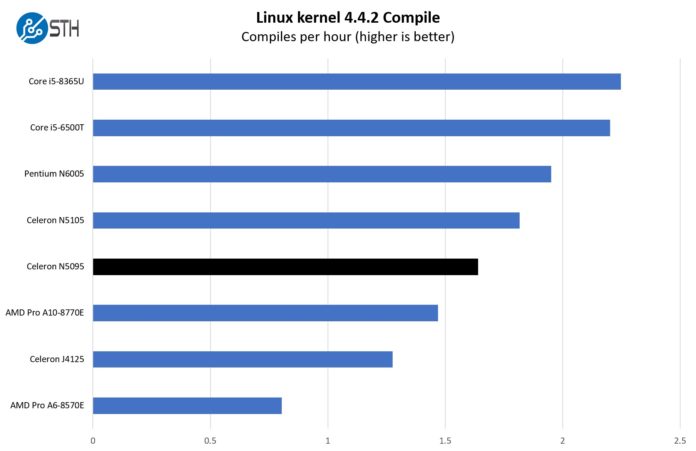
Still, when it comes down to it, we think most of our readers would trade $7-11 upfront for 1-3W lower power consumption. Depending on where you are in the world, that difference can be made up in 1-2 years. If you have cheap power, then perhaps this is less of a concern and really either will work fine. It also did not use 5W more power than the N5105 so perhaps do not be fooled by the Intel Ark TDP spec, the power consumption is much closer in these systems.
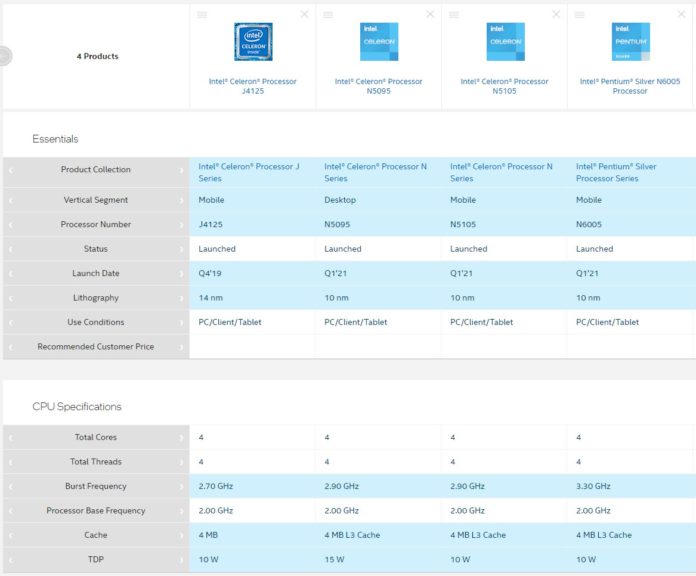
We have also noticed that after we started reviewing these, the N5105 became more popular. Our sense is that the N5105 is going to be the dominant CPU in these going forward as it is probably the best price/ performance/ power mix of the three options. The N5095 is by no means bad, it is just not in the same sweet spot.



